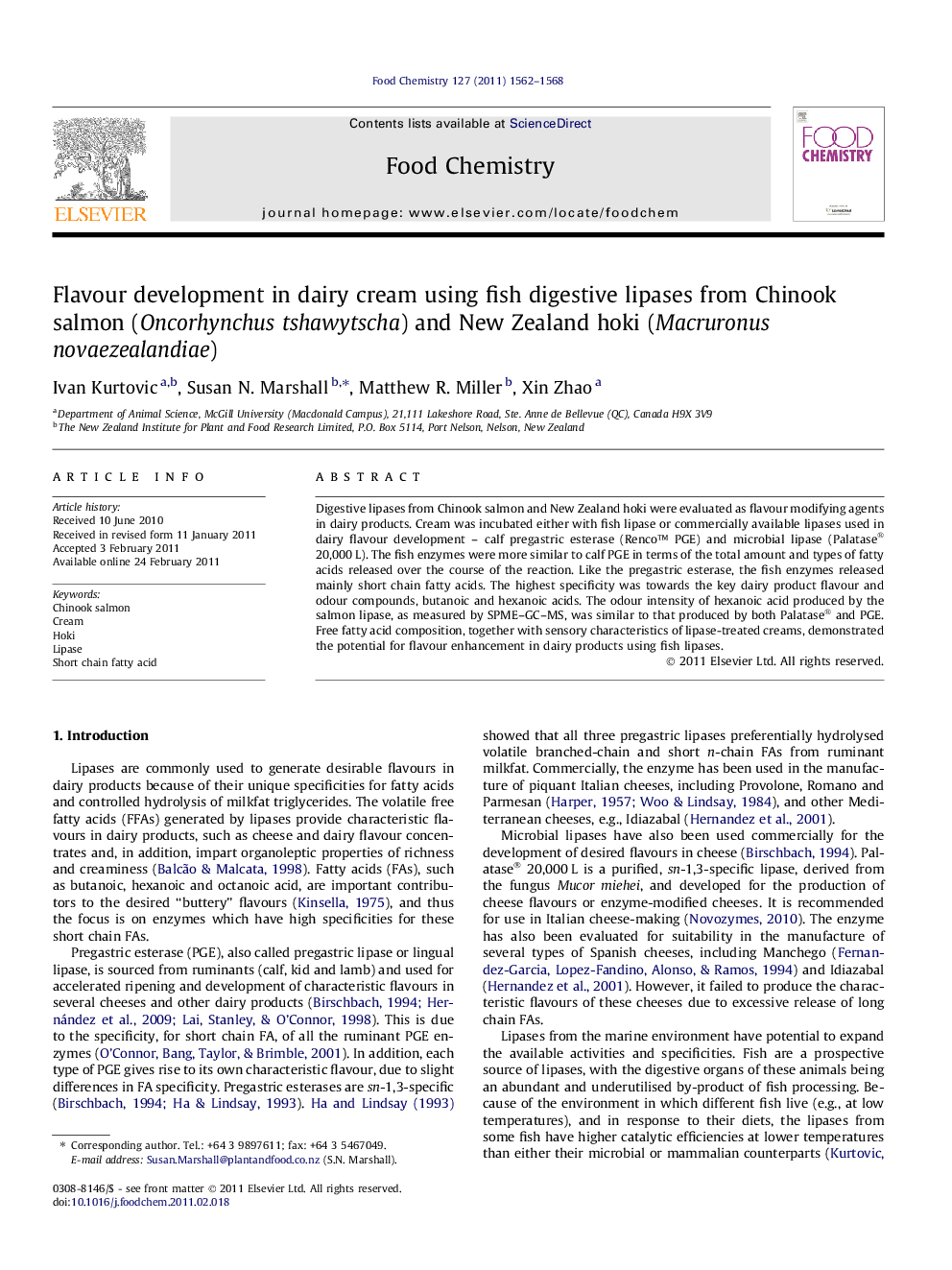| Article ID | Journal | Published Year | Pages | File Type |
|---|---|---|---|---|
| 1184671 | Food Chemistry | 2011 | 7 Pages |
Digestive lipases from Chinook salmon and New Zealand hoki were evaluated as flavour modifying agents in dairy products. Cream was incubated either with fish lipase or commercially available lipases used in dairy flavour development – calf pregastric esterase (Renco™ PGE) and microbial lipase (Palatase® 20,000 L). The fish enzymes were more similar to calf PGE in terms of the total amount and types of fatty acids released over the course of the reaction. Like the pregastric esterase, the fish enzymes released mainly short chain fatty acids. The highest specificity was towards the key dairy product flavour and odour compounds, butanoic and hexanoic acids. The odour intensity of hexanoic acid produced by the salmon lipase, as measured by SPME–GC–MS, was similar to that produced by both Palatase® and PGE. Free fatty acid composition, together with sensory characteristics of lipase-treated creams, demonstrated the potential for flavour enhancement in dairy products using fish lipases.
Research highlights► Chinook salmon and hoki lipases showed potential for dairy flavour enhancement. ► The fish enzymes had highest reactivity towards short chain fatty acids in cream. ► The highest specificity was towards butanoic and hexanoic acids.
